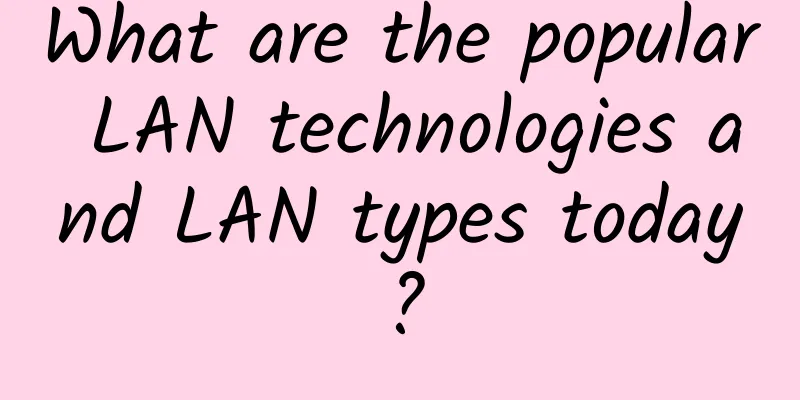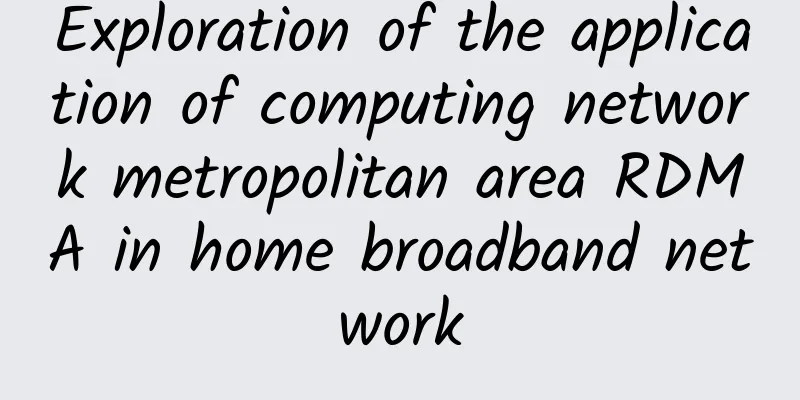What are the popular LAN technologies and LAN types today?

|
LAN technology in computer networking is widely used by all kinds of businesses to share and receive information. Computers are connected through a network to exchange information. This type of network is called a Local Area Network (LAN). Having said that, a computer network or LAN usually works within a limited geographical area like a building or a college campus. LAN components include cables, access points, switches, routers, and other elements that enable devices to connect to internal servers, web servers, and other LANs over wide area networks. These LANs are powered by different technologies to initiate connections between different devices. What are the common LAN technologies? Where are they used? What are the different types of LAN technology devices in use today? This article aims to answer this question and more. What are the most commonly used LAN protocols?A LAN (Local Area Network) is a computer network used to connect devices within a limited geographic area, such as a school, office building, or home. There are several types of LANs, including: Ethernet : This technology is the most popular among all other LAN technologies in this list. It complies with IEEE standard 802.3 and is preferred over other technologies due to its simplicity, low-cost investment, backward compatibility, noise immunity, etc. Ethernet works on two layers of the Open Systems Interconnection (OSI) model - Layer 1 and Layer 2. Ethernet technology has evolved over the years and today it is classified into the following types based on speed. 10Mbit/s : This is the first iteration of the technology, introduced in 1983. It is also known as 10Base5. Fast Ethernet : Introduced in 1995, this type of Ethernet is designed for 100mbit/s. This type of Ethernet is covered under the IEEE802.3u standard. 100Base-TX is the most popular type of Fast Ethernet physical layer. Among them, 100 indicates that the transmission speed is 100mbit/s; BASE stands for baseband signaling; t&f refers to the carrier medium of the signal, which can be twisted pair (Twisted Pair Cable) or optical fiber (Fiber Optic Cable). However, the last character X or 4 refers to the signal code. X is a placeholder for TX and FX. Learn more about Fast Ethernet. Gigabit Ethernet : This standard was introduced in 1999 and is designed to transmit 1 Gigabit or 1 billion bits of data per second. Gigabit Ethernet replaced Fast Ethernet and was designed to meet the increasing speed requirements of Voice over IP (VoIP) and multimedia networks. 1000BASE-T is the most popular version of Gigabit Ethernet. It is defined according to the IEEE802.3ab standard. 10 Gigabit Ethernet : 10 Gigabit Ethernet is one of the latest Ethernet standards, designed to transmit at 10Gbits/sec, which is faster than Gigabit Ethernet. This standard uses fiber optic cables. Power over Ethernet : This standard transmits both power and data over the same cable. This standard, commonly referred to as PoE, is used to connect devices such as Internet Protocol (IP) cameras and Voice over Internet Protocol (VoIP) phones. It uses Ethernet cables Category 5 or higher. It does not require any external AC power cord or adapter. Due to its unique advantages, PoE has become a popular Ethernet standard over the years and is now used to connect various types of wireless Ethernet devices. Token Ring : This LAN technology was developed by IBM and uses three-byte frames to connect computers. These three-byte frames are called tokens, and they are transmitted along the servers or computers to form a logical ring structure. Token Ring networks have data transmission rates of 4, 16, and 100 Mbps. These networks are mainly used in enterprise environments, but have been replaced by Ethernet today. Asynchronous Transfer Mode (ATM) : This is a fast cell-based communication technology. This telecommunication standard is defined by ITU and ANSI. It is used to transmit various types of signals in a network. One of the main advantages of ATM is that it does not require a separate overlay network to transmit the signals. ATM can connect points in both near and far geographical locations. ARCNET : ARCNET is short for Attached Resource Computer Network and was used to connect microcomputers in the 1980s. It was mainly used for automation tasks in offices. The technology is used today for industrial control. FDDI : Fiber Distributed Data Interface is another LAN technology currently in use. It uses fiber optic cables and has a transmission speed of up to 100Mbit/sec. This LAN technology has a transmission distance of up to 200 kilometers and uses two rings. The first ring is used as a primary backup and the second ring is used as a secondary backup. The capacity of the primary ring is 100Mbit/sec, and the secondary ring can also carry another 100Mbit/sec, bringing the total to 200Mbit/sec. What are the types of LANs?Client Server LAN : In this type of LAN, a dedicated server is responsible for managing the network and providing services to the clients (computers). The server controls access to resources and ensures that data is efficiently transferred to all devices. This type of network LAN technology is often used in large organizations. Peer-to-Peer (P2P) LAN : In a peer-to-peer network, all devices are equal and there is no dedicated server. Each device can act as a client and a server, and resources are shared between all devices. This type of network LAN technology is often used in small offices or homes. Wired LAN : Used to connect devices in a wired LAN, using physical cables such as Ethernet cables. This type of network LAN technology is usually faster and more reliable than wireless LAN, but may be less flexible. Wireless LAN : A wireless LAN uses radio waves to transmit data. This type of network is more flexible than a wired network, but can be slower and less reliable, especially in areas with a lot of interference. Cloud-managed LAN : In a cloud-managed LAN, the network is managed and configured through a cloud-based management system. This type of network is particularly useful for organizations with multiple locations or remote workers because it allows the network to be centrally managed and monitored. Now that the role played by each LAN technology is well known, it is important to use the right type of equipment to achieve the desired results. Due to the increasing use of networks, today you can find LAN connection solutions from different manufacturers. However, they differ in configuration, performance, and price. |
>>: Can the interviewer ping 127.0.0.1 after being disconnected from the Internet?
Recommend
Inventory | 7 major acquisitions in the cybersecurity field recently
Cybersecurity is more important today than ever b...
HostYun Los Angeles, USA, CN2 GIA line AMD series VPS monthly payment starts from 16 yuan, native IP
HostYun recently launched a VPS with AMD 5950X+Sa...
IT technology companies should not be "outsiders" in the fight against the epidemic! Details revealed
At the beginning of the 2020 New Year, a sudden C...
How will 5G technology change application development?
Technology is constantly evolving, and it's e...
In the era of data center explosion, attention should be paid to network cabling
With the advent of the big data era, all kinds of...
How to set IP in CentOS9
Just for record, I found that there are still hug...
Traffic scheduling: DNS, full-site acceleration and computer room load balancing
We have learned about how to deal with traffic pr...
RackNerd Seattle VPS Promotion $12.99/year - Single core, 1G memory, 15G hard disk, 2TB monthly traffic
At the beginning of the month, RackNerd released ...
New in Los Angeles CN2 GIA/Japan SoftBank special price starting from $93 per year
BandwagonHost has launched a SPECIAL 40G KVM PROM...
Wireless communication technologies within reach in daily life - WiFi, Bluetooth and NFC
WiFi Wi-Fi (Wireless Fidelity) is a wireless LAN ...
No need for WiFi, can you surf the Internet with light? China releases the first visible light communication chip
No need for WiFi, can you surf the Internet with ...
A brief tutorial on the Dig command
Hello everyone, I am Xianyu. I don’t know how oft...
ZgoCloud: $14/quarter-AMD Ryzen9, 1GB memory, 30G NVMe, Osaka, Japan data center
ZgoCloud domain name registration started in Apri...
Is your phone stolen within minutes after you lose it? Teach you how to set the SIM card password
The Ministry of Industry and Information Technolo...
Network security knowledge: View the user license agreement
It is very necessary to understand the user licen...








![[cyberMonday] DediPath: VPS starts at $10 per year, dedicated server starts at $108/three months, 1Gbps unlimited traffic, multiple data centers in Los Angeles and other places](/upload/images/67cac00425403.webp)
